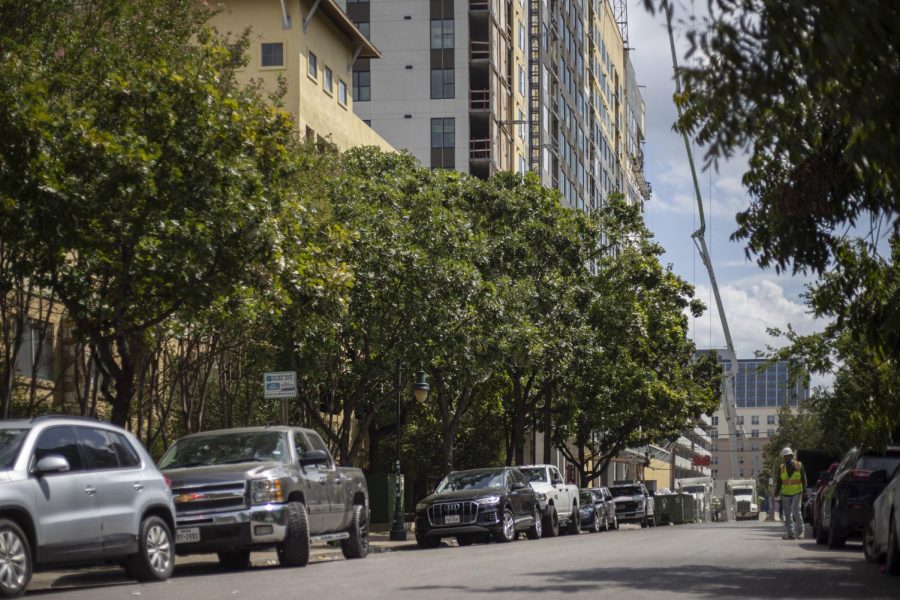UT strategic plan, high enrollment rates affect student parking availability
September 26, 2022
UT’s 10-year strategic plan, Change Starts Here, aims to make the University a high-impact research school. In doing so, UT’s campus is expanding to accommodate more facilities, taking up more land. Compounded with this fall’s highest student enrollment rates of all time, space has become scarce.
“(Parking) lots are slated to go away in order to further academic goals on campus,” said Blanca Gamez, director of Parking and Transportation Services. “New buildings go on nice, flat land that is available, which is ultimately going to be surface parking lots.”
Housing accommodations and academic buildings contribute to the loss of parking. The graduate student housing development, set to be located at 1200 E Martin Luther King Jr. Blvd., will replace the available surface parking in the area, Veronica Trevino, assistant director of issues management, said in an email. She said the East Campus Garage was built to provide adequate parking in place of the lost surface lots.
Gamez said there are currently approximately 17,000 parking spaces available on campus to accommodate over 50,000 students and faculty members, according to 2021 UT figures.
Most parking permits do not guarantee a parking space and require commuters to abide by a first-come, first-serve system, Gamez said.
“We’re a university that is landlocked, it’s densely populated … we don’t have real estate to grow,” Gamez said. “Obviously not everybody can park because there’s not enough parking infrastructure to allow that to happen.”
Neuroscience junior Yessenia Montoya said she owns a car, but ends up relying on CapMetro buses to get to campus from Riverside to avoid paying permit fees and compete for a parking spot daily.
“The closest lot to campus is really close to the (I-35) bridge,” Montoya said. “You have to take another bus (from the lot) just to get onto campus itself, and that’s if you’re able to get there … If I’m paying for a pass, I expect to be able to drive, park and get to my classes with ease.”
University parking permits range from $49 to $940, depending on someone’s desired parking days and garage locations, according to the PTS website. As an auxiliary unit at the University, all profits from PTS are used to maintain the lots and excess funds are rerouted to other campus entities, such as UTPD or the Office of Sustainability, Gamez said.
In West Campus, the city has temporarily changed a number of pay-to-park zones around apartment complexes to tow-away zones, said Jack Flagler, a representative from the Austin Transportation Department.
“When construction projects are active, city staff at times wrap pay stations and add temporary ‘parking by permit only’ signs to let crews safely work,” Flagler said. “West Campus is a busy area for construction, development and utility work, so UT students, faculty and staff may see more of these changes in the future.”
The lack of available parking both on and off campus has led students like Kenia Arevalo, a health promotion and behavior science junior, to choose between attending class and managing their finances.
“Last semester I would take my car pretty often because I felt like I couldn’t really rely on the bus,” Arevalo said. “Sometimes I’d feel like (not) going to class because I don’t have to pay and I’m like, ‘I’ve paid a lot for the garage that week.’”
PTS recommends utilizing other modes of transportation such as the bus system, biking or carpooling in order to avoid parking issues, according to their website.
“PTS (is) continuing to work with the University as growth happens to ensure availability of parking,” Trevino said. “The University constructs garages based on strategic long-term needs.”



